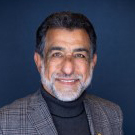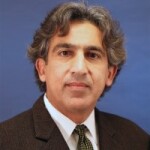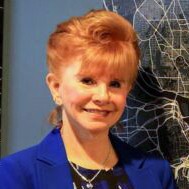Webinar
Navigating the Future: Industry Insights for 2024
On-demand Webinar | Free

As we come up on the holiday season, and therefore the end of this calendar year, it is a natural time to step back and observe the state of every industry. That is particularly true in the world of geospatial, reality capture, and lidar-related work, all spaces which are rapidly changing in the face of ever-evolving technology and pressing challenges.
February 11-13, 2024 | Colorado Convention Center | Denver, CO, USARegistration is Open for Geo Week 2024!
To get a clear picture of where these industries stand today and how things will be shaping up as we prepare to turn the calendar over to 2024, Geo Week News recently hosted a webinar panel discussion looking at current trends, technologies, and strategies which will shape these spaces into the new year. The panel featured esteemed members of the Geo Week advisory board, providing keen insights from those at the highest level of industry with a vested interest in the flourishing of the industries into the future.
The panel, moderated by Geo Week News’ Carla Lauter, was as follows:
Panelists
 |  |  |  |  | ||||
| Martin Flood VP, Special Projects GeoCue | Qassim Abdullah VP & Chief Scientist Woolpert | Kourosh Langari BIM Manager Caltrans | Shawana P. Johnson CEO Global Marketing Insights | Amar Nayegandhi Senior Vice President Dewberry Engineers |
This hour-long conversation was wide-ranging, touching on a number of the most pressing and important topics in the geospatial industry right now. Here are just a few of the highlight topics touched on by the esteemed panel.
Keeping pace with technology
One of the major themes of this conversation was the rapid pace of change in technology involved in the geospatial industry. This isn’t news to anyone with any familiarity with the space, as it’s common knowledge that pretty much as soon as you master a specific tool there will be a replacement introduced shortly thereafter. That said, there were some really interesting perspectives on this idea, particularly within a discussion about the biggest challenge the respective panelists’ industry is facing heading into 2024.
Flood, for example, spoke about this, noting that the “pace of technology doesn’t slow down.” That’s certainly not a bad thing, particularly within the lidar and reality capture industry in which he works, where improved sensor technology has made data more accessible and opened up new possibilities. That leads to something of a double-edged sword, however, as Flood noted that this phenomenon means there are new industries and professionals using this technology. That, in turn, means there is more assistance needed, and experts to help shepherd new faces into the workflows.
This rapid pace of change leads to certain imbalances, a point touched on by both Langari and Nayegandhi. The former made a key point, looking at the development of this technology in relation to how professionals are working, adjusting too slowly to these innovations. He said, “We’re trying to take the 20th century workflow and apply 21st century technology to it.” To truly take advantage of innovation, the workflows need to change to reflect the changes and maximize efficiency.
Nayegandhi further points towards this imbalances between the technology and processes around how it is being used. He says that professionals need to figure out, “How do we move everything in the same direction at the same time?” As an example, he points out that there are many instances in which software capabilities lag behind innovations with hardware, or vice versa.
Addressing issues with the workforce
If you talk to anyone in the geospatial industry about challenges they are facing, it certainly will not take long before the issue of attracting new workers comes to mind. In the world of surveying, for example, is somewhere around the 50-60 years old range, depending on who you ask.
This is a problem Johnson in particular focused on, which is no surprise given her position working with the United States government as well as prominent companies within the industry. It’s on the top of everyone’s mind, which she pointed out throughout the conversation. Among other innovations, she talked about how large language models can be used to address worker shortages in a number of ways, including feeding systems knowledge directly from older workers.
Both her and Abdullah point towards the need for more automation and analysis within the industry to help address the issue of a shrinking and aging workforce as well, with Abdullah noting that the shortages in industries like geodesy and surveying affect other industries, like mapping.
How has AI affected the industry?
In today’s ecosystem, it’s impossible to have a conversation around the future of any technology-adjacent industry without touching on how artificial intelligence is and will make its impact. So, it’s no surprise that this became a focal point of this conversation, in which the panelists looked both at how AI can help the geospatial industry as well as the state of its usage in the space today.
To the first point, there is a direct connection to the previous topic of conversation with the workforce shortages. Finding ways to attract young talent into the industry is of course still a focal point for those within the geospatial industry, but there is also recognition to find ways to work around these shortages. AI fills that gap, which Abdullah notes. He talked about the fact that there is no shortage of data being collected, in large part because of improved hardware, but there is a shortage of data mining and insights, which AI can help provide.
However, he also notes that with lidar data in particular AI has long been used, but there haven’t been innovations beyond using the algorithms for cleaning up the data. He says that there needs to be more time and money invested into the space to maximize its utility.
However, that investment can be easier said than done. Johnson spoke about the “AI cemetery,” which is “filled with companies that jumped in thinking they were going to make huge money on geospatial data.” That hasn’t quite come to fruition, though, which she attributes to the idea of “trustworthiness.” As we’re seeing in the consumer space with LLMs like ChatGPT, it’s important for users to trust that the automated systems are providing correct and usable information. For geospatial data, many of the end users don’t necessary have the knowledge to develop that trust on their own, which means that the AI companies need to have their own in-house experts to support their clients, which makes it a less attractive investment for AI generalists. Developing that trustworthiness, Johnson says, is the next phase in bringing the technology into this industry.
★★★
These are just a few of the topics touched on throughout this hour-long conversation. In addition to what’s mentioned above, they also discussed innovation in the world of sensors, particularly for topobathymetric work, the maturity of UAV usage in data collection, and so much more. Be sure to sign up for an on-demand recording of the webinar by filling out the form on the right side of this screen, and register to join the panelists in Denver for Geo Week 2024 where these conversations will continue and expand.

